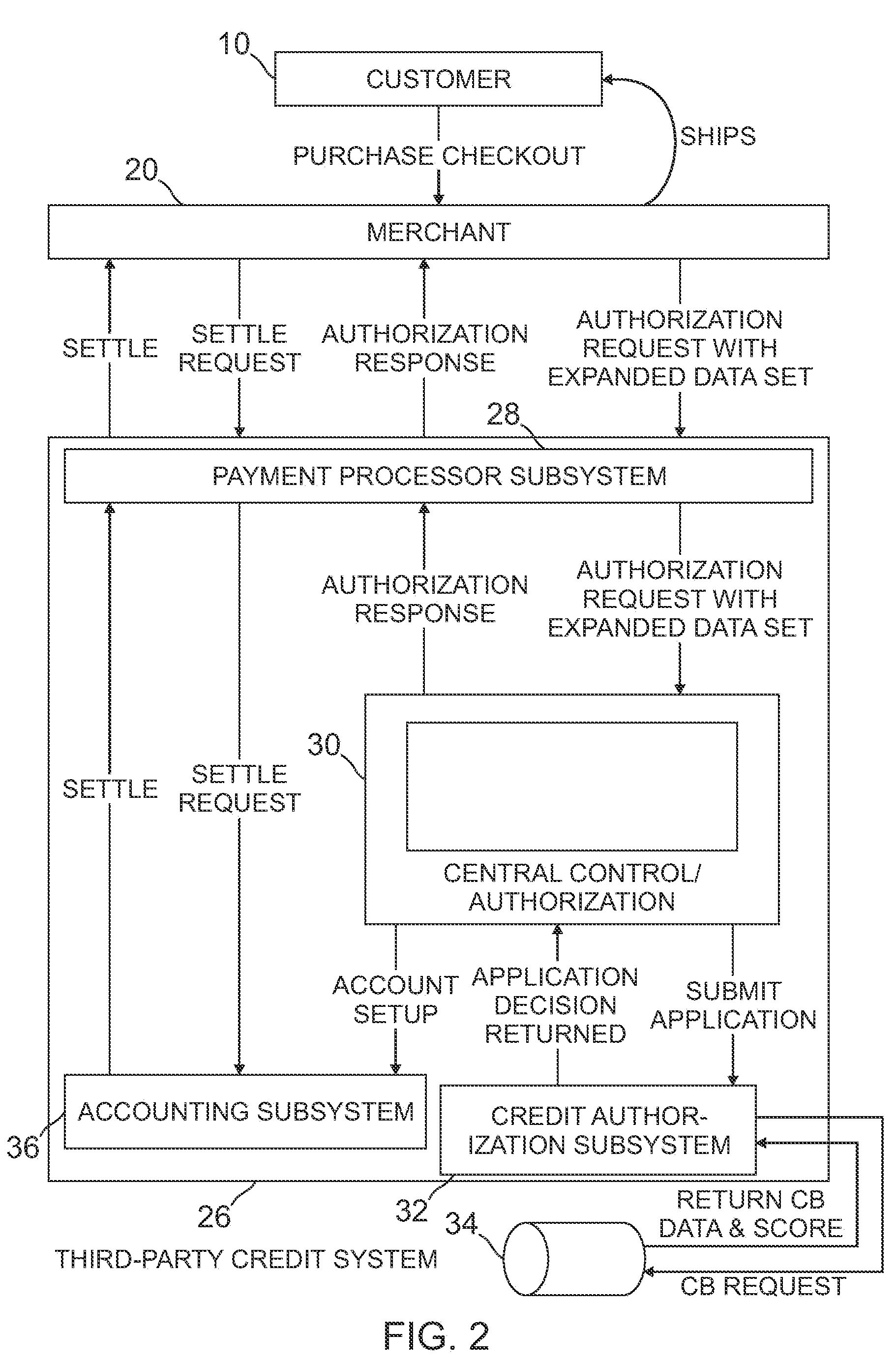Method and system for completing a transaction between a customer and a merchant
a technology of a customer and a merchant, applied in the field of transaction systems, can solve problems such as the lack of credit facility of debit cards, the subject of fraudulent use, and the problem of fraudulent purchases, and achieve the effect of economic and risk mitigation efficiency
- Summary
- Abstract
- Description
- Claims
- Application Information
AI Technical Summary
Benefits of technology
Problems solved by technology
Method used
Image
Examples
Embodiment Construction
Typically, wireless purchases, such as Internet, telephone, e-mail and wireless device purchases, are conducted using a customer 10 credit card. This process is illustrated in FIG. 1. However, in order to receive a credit card, the customer 10 must receive a credit card application from a bank 12. These applications are distributed by the bank 12 through various channels, such as direct mail, “take-ones” and phone calls. Next, the customer 10 completes the application and returns it to the bank 12. The bank 12 then enters the application data into a bank decision engine 14, which, in turn, requests a credit report from a third-party credit system 16 on the customer 10. The third-party credit system 16 returns the credit data and a score for the customer 10. The bank decision engine 14 uses the credit data and the application data to determine if the customer 10 is qualified for the credit card. The bank decision engine 14 then returns the credit decision to the bank 12. If approved,...
PUM
 Login to View More
Login to View More Abstract
Description
Claims
Application Information
 Login to View More
Login to View More - R&D
- Intellectual Property
- Life Sciences
- Materials
- Tech Scout
- Unparalleled Data Quality
- Higher Quality Content
- 60% Fewer Hallucinations
Browse by: Latest US Patents, China's latest patents, Technical Efficacy Thesaurus, Application Domain, Technology Topic, Popular Technical Reports.
© 2025 PatSnap. All rights reserved.Legal|Privacy policy|Modern Slavery Act Transparency Statement|Sitemap|About US| Contact US: help@patsnap.com



